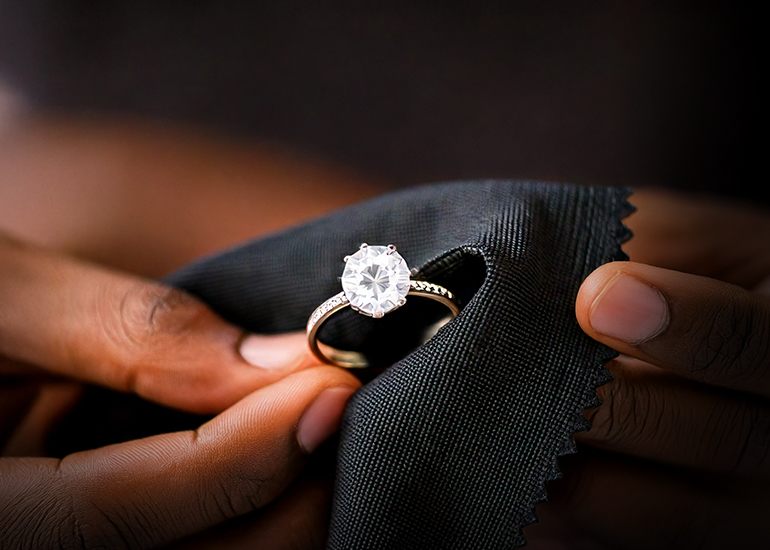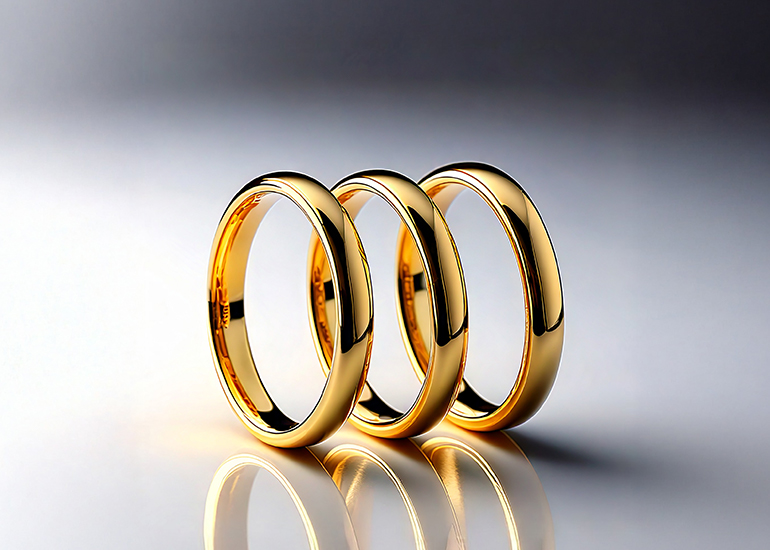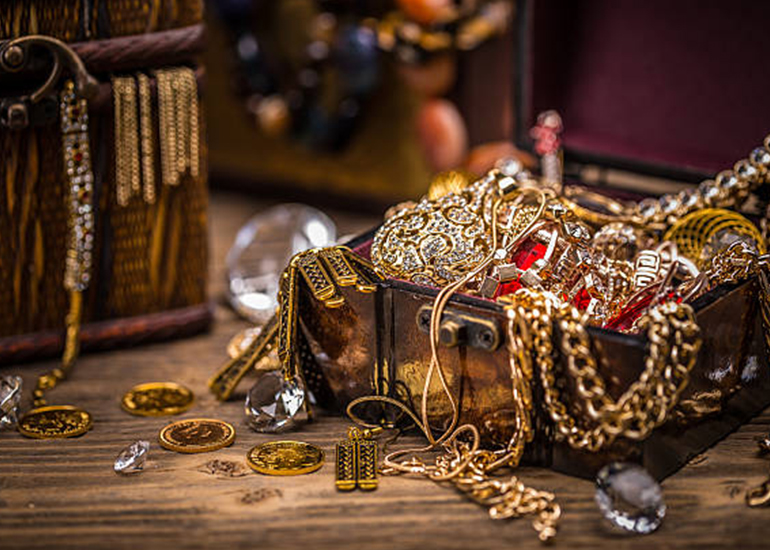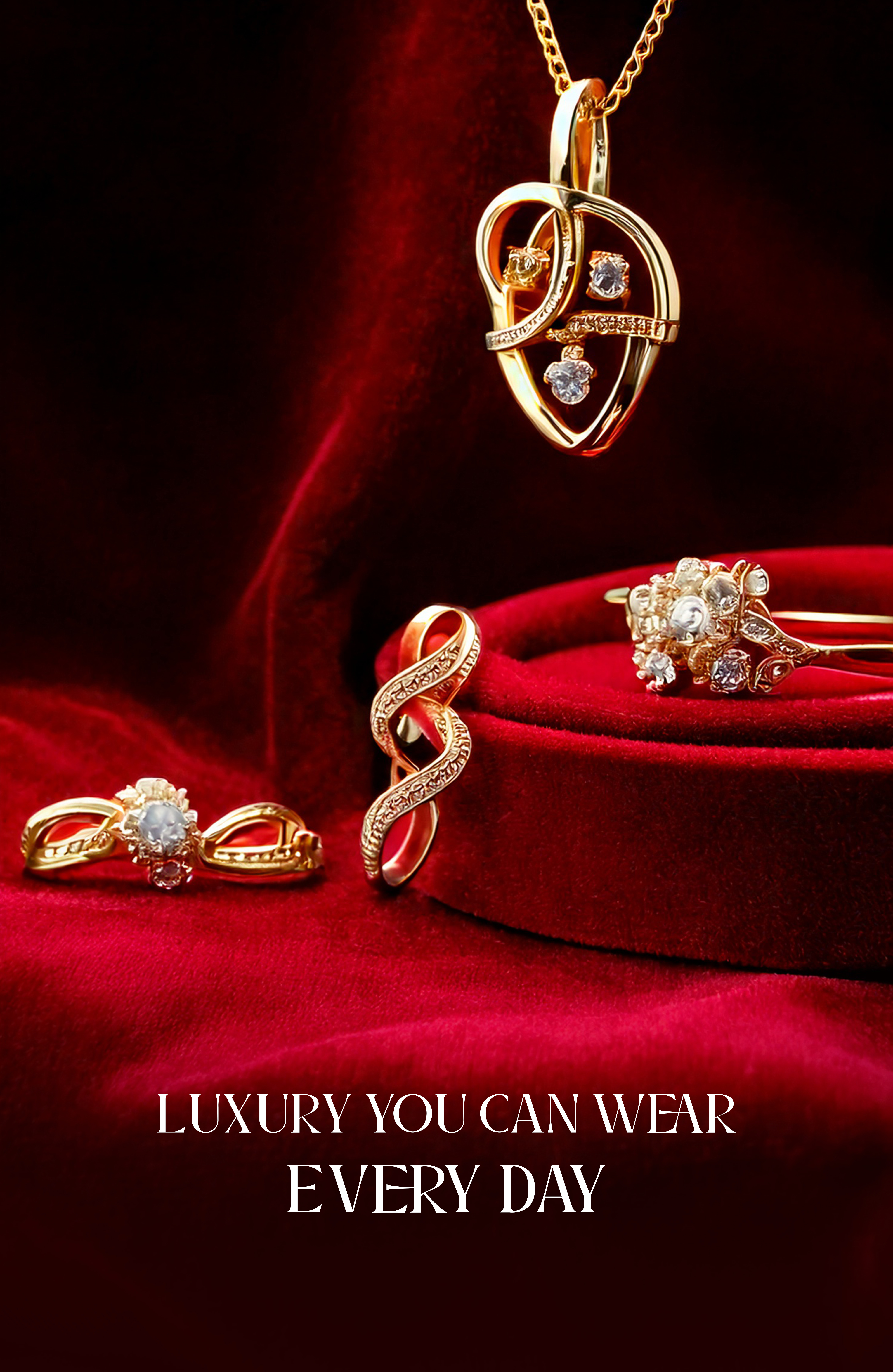
2 December
How to Spot Fake Jewelry: A Guide to Authenticating Your Jewelry
:
Jewelry can be one of the most treasured investments we make, whether it’s a sparkling diamond ring, a delicate gold necklace, or a statement piece of vintage jewelry. Unfortunately, the rise in counterfeit goods has made it harder to distinguish between genuine, high-quality jewelry and its fake counterparts. For anyone looking to invest in fine jewelry, it’s crucial to know how to spot a fake to ensure you’re getting exactly what you pay for.
In this guide, we’ll show you how to authenticate your jewelry with confidence, so you can enjoy your precious pieces with peace of mind.
1. Check the Hallmarks and Stamps
One of the first things to look for when authenticating jewelry is the hallmark or stamp. These marks indicate the purity and authenticity of precious metals like gold, silver, and platinum. Common stamps include:
- Gold: 10K, 14K, 18K, 22K, or 24K (the "K" stands for Karat, which measures the purity of the gold)
- Silver: 925 (indicating sterling silver)
- Platinum: 900 or 950 (indicating the percentage of platinum content)
Pro Tip: Keep in mind that some high-end jewelry makers (like Cartier or Tiffany & Co.) often have specific hallmarks that are difficult to replicate, so learning these marks can help you identify authentic pieces.
2. Test the Weight
Genuine jewelry made of precious metals tends to have a substantial weight. If a piece of jewelry feels unnaturally light for its size, it might be a fake. Counterfeit jewelry is often made with base metals or alloys that are less dense than gold, silver, or platinum, making it lighter and easier to spot.
How to Test:
- Compare the piece’s weight with a similar, authentic piece of jewelry made from the same metal.
- Use a digital scale for more accuracy if you have one available.
3. Magnify the Craftsmanship
The quality of craftsmanship is a telltale sign when trying to determine if jewelry is fake. Fake jewelry is often mass-produced and poorly made. Pay close attention to the following areas:
- Prongs: On genuine diamond rings, prongs should be smooth and perfectly shaped. Fake jewelry may have rough or uneven prongs.
- Setting: A genuine piece will have a high-quality, sturdy setting that holds the gemstones securely. Look for loose or uneven settings as a sign of a counterfeit.
- Clarity: Authentic high-quality jewelry will have impeccable polishing and finish. Fake pieces may show signs of poor finishing, such as visible seams or rough edges.
4. Perform the Magnet Test for Non-Gold Jewelry
A simple test to determine whether a piece is made of real gold, silver, or another metal is to check its reaction to a magnet. Precious metals like gold and silver are non-magnetic, so if the jewelry is attracted to a magnet, it is most likely made of a magnetic, cheaper metal.
How to Do It:
- Take a strong magnet (like a refrigerator magnet or a jewelry magnet) and hold it near the jewelry.
- If the jewelry is attracted to the magnet, it is likely made of base metal, not precious metal.
5. Inspect the Gemstones
When it comes to gemstones, their authenticity can also be easily determined by examining their characteristics. Real gemstones have unique qualities that are hard to replicate. Here’s what to look for:
- Diamonds: Genuine diamonds sparkle in all colors of the spectrum. Fake diamonds, often made of cubic zirconia, lack the same brilliance and may appear overly white or dull.
- Sapphires, Rubies, and Emeralds: Authentic gemstones usually have natural inclusions (or “flaws”) that make each stone unique. If a gemstone looks too perfect, it could be synthetic or fake.
- Check for weight: Real gemstones are generally heavier than their fake counterparts. If a gemstone feels too light, it might not be genuine.
6. Look for the Right Paperwork and Certification
If you’re purchasing a high-value piece, such as a diamond or an expensive gemstone, it’s essential to ask for certificates or appraisals from reputable sources.
- Diamonds should come with a certificate from labs like GIA (Gemological Institute of America) or AGS (American Gem Society).
- Gemstones should come with a certificate from a reputable gemological institute, ensuring that the gemstone is natural and not synthetic or treated.
Pro Tip: Always buy from reputable, established jewelry stores that offer certification for their pieces. When purchasing online, make sure the seller provides a guarantee of authenticity.
7. The Price Is Too Good to Be True
Lastly, if a piece of jewelry seems too good to be true, it probably is. While sales and discounts are common in the jewelry industry, a significant markdown on an item that should be priced much higher could indicate that it's a fake. Be cautious when a piece is being offered at an unusually low price, especially if it’s from a seller that lacks a solid reputation.
Pro Tip: If you’re looking at an online retailer, do some research on the store’s reputation. Check customer reviews and ratings, and verify their authenticity before making a purchase.
 India
India
 United Arab Emirates
United Arab Emirates


 App Store
App Store
 Play Store
Play Store





Leave a Comments
Your email address will not be published. Required fields are marked *